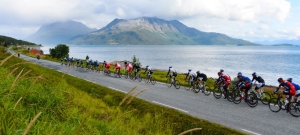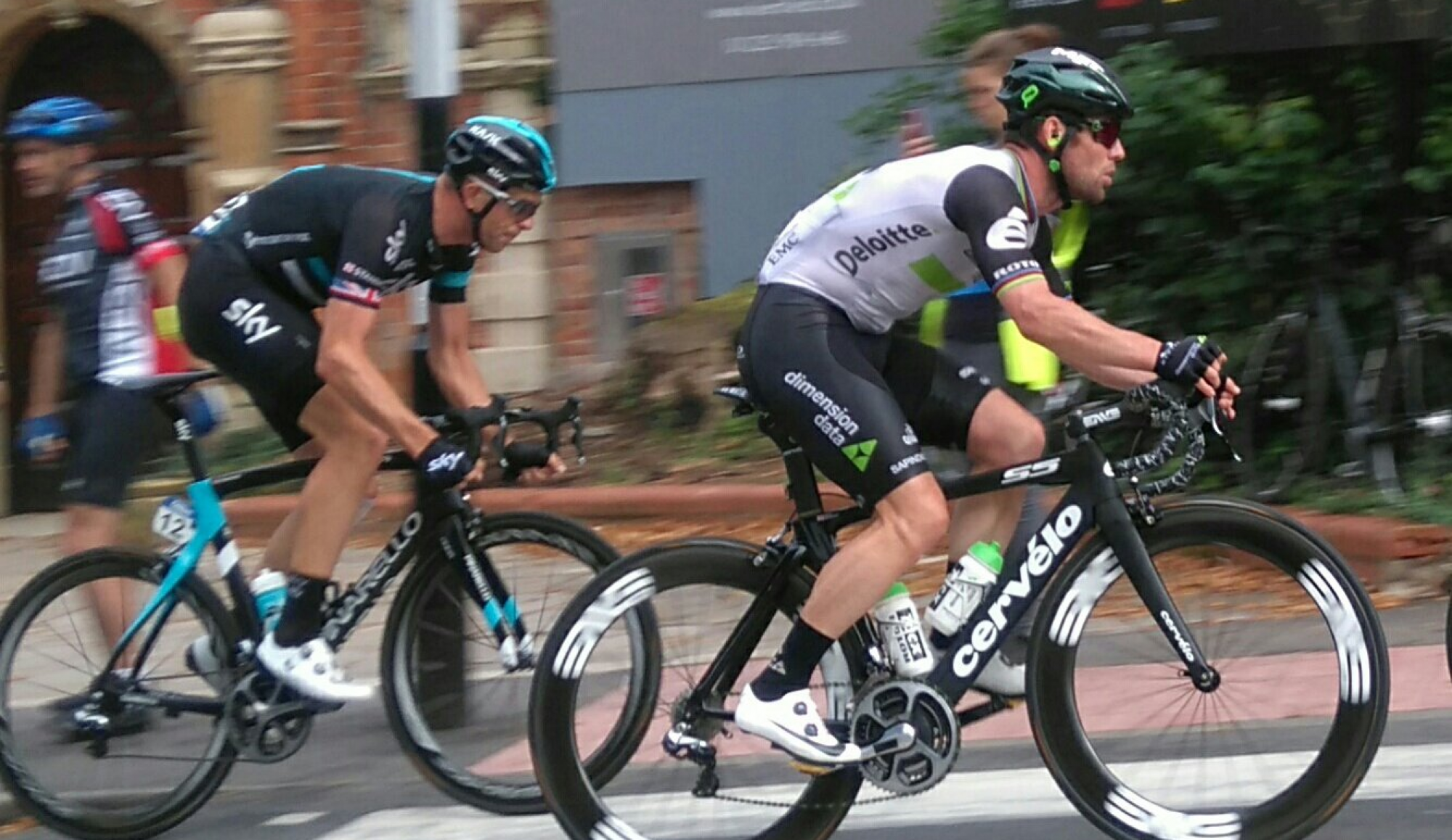This afternoon one of the most spectacular races in the calendar begins close to the Arctic Circle.
Here’s your guide to the Arctic Race of Norway, with thanks to Eliot Lietaer of Team Sport Vlaanderen-Baloise, who’ll be lining up on the start line today.

What is the Arctic Race?
A fairly new addition to the race calendar, the Arctic Race was first held in 2013 as a category 2.1 UCI Europe Tour event. From 2015 the race was classified as 2.HC. Fittingly, the inaugural edition was won by the Norwegian Thor Hushovd. Hushovd continued to be involved with the event as an official race ambassador.

What’s the route like?
The route this year is made up of 4 stages, each designed to accommodate different styles of rider. This is a theme in the Arctic Race of Norway – to date we’ve seen overall victories going to a sprinter (Hushovd), climber (Kruijswijk), GC rider (Taaramaie) and Classics specialist (Moscon). Last year, Team Sky’s Moscon took home 500 kilograms of fish as well as the winners Blue & Orange Jersey!
The riders will cover a distance of 680km over the 4 stages of the race, cheered on from the roadside by enthusiastic fans, and cycling through some of the most spectacular scenery seen by the professional peloton. “Norway is a really nice country to race in” explains Eliot Lietaer of Sport Vlaanderen-Baloise, who is competing in his second Arctic Race. “The roads are really good, the hotels are nice – always good WiFi – and there are very friendly people cheering at the side of the road”.
The route this year is well suited to Lietaer’s style of racing, comprising one real climbers day, two for the sprinters – one a pure sprint day – and a rolling stage perfect for puncheurs, which includes some sharp climbs to test the legs.
“I’m really looking forward to the Arctic Race of Norway this year because it really suits me – three relatively flat stages and one mountain top finish where the GC will be decided and where I can show my real strength”.
Lietaer thrives in situations like this, and coming off the back of a great showing at the Vuelta a Burgos, don’t be surprised to see him mixing it at the sharp end. “I prefer stage races as I do very well at them. My recuperation is very good at the end of a stage race, and I’m still feeling strong and can go for a good result. The Tour de Wallonie and Vuelta a Burgos were my goals for the season as well as the Arctic Race – after that I’m only racing a few one day events. I hope to do well as I have ambitions to ride for a WorldTour team next year, so every race counts”.
What can we expect to see over the 4 days of racing?
Amazing scenery, Norwegian flags and some great racing!
“The style of racing is pretty similar to races in traditional cycling countries” explains Lietaer. One thing that will be different is the amazing backdrop. “I rode the Arctic Race of Norway once a few years ago, and it was a really nice experience, as we finished one stage at a place called ‘The End of the World’ – the North Cape. It’s always nice to finish at spectacular places like this.”

Day one sees the riders starting the race on the island of Andorja, and utilises a finishing circuit last seen in the 2015 edition of the race. 5km before the finish line, the riders will reach the summit of the Skistua climb, which covers 2.3km at an average of 6.6% gradient. The pure sprinters will be eyeing up day two, which starts at Sjovegan and uniquely finishes on the runway of the airport at Bardufoss.
Stage three is the day for the climbers, with the route heading into the spectacular Lyngen Alps for a summit finish in Finnvikdalen, after 4km of climbing with a 5.5% average gradient.
The forth and final stage starts and finishes in the Norwegian city of Tromso, encircling the settlement with a loop of 118km before tackling three laps of a 13km finishing circuit – including some pretty punchy climbs to ignite the GC competition.
Who’s competing?
The Arctic Race of Norway has a bit of a cult following, and its position in the race calendar makes it an attractive prospect before the Vuelta. Fresh from victory at the Tour of Poland, BMC’s Dylan Teuns is confident he’ll be able to perform well. Teams at the Arctic Race are made up of 6 riders, with some, like Dimension Data, choosing to take one or two stagiaires to increase their race experience.
WorldTour teams Dimension Data, Astana, Sunweb, Katusha-Alpecin and Teuns’ BMC will be on the start line, and there’ll be a strong local contingent with a number of Norwegian teams taking part.
“There are a lot of Norwegian teams competing with a lot of talented guys who are really motivated” explains Lietaer.
What are the prizes on offer?
The race leader will wear the Blue & Orange Jersey, with a Green Jersey on offer for the Points Classification, and the so-called ‘Salmon’ Jersey (a sort of orange colour) for the King of the Mountains. Prizes are also rewarded to the ‘Most Active Rider’ of the day, and to the best placed team on GC.
Who’s going to win?
Newly crowned European champion Alexander Kristoff will want to continue the winning streak he started at London-Surrey – especially on home turf. Dylan Teuns of BMC is the Freewheeling pick for the GC however, and don’t count out Rein Taaramäe, the overall winner here in 2015.
When can I watch it?
Eurosport 1 will show live coverage from 4-5pm BST. This footage will be repeated on E2 at 7pm.
